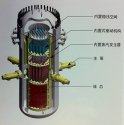My understanding from reading books is that quite large % of noise comes from pumps needed for reactors and one of the biggest advances on newer boats are those passive cooled reactors what dont need any pumps for water circulation.
You always need to have water pumps as a backup in case of emergency or if the natural circulation for some reason isn't working well, even with these natural circulation reactors. But at least when running primarily, you can use natural circulation. Likewise, nuclear reactors that have an active coolant system, are supposed or at least mandated by regulation to have a passive natural circulation backup in case active coolant pumps fail. So natural circulation is a common tech already used in nuclear power plants around the world, even in China.
Last edited:





